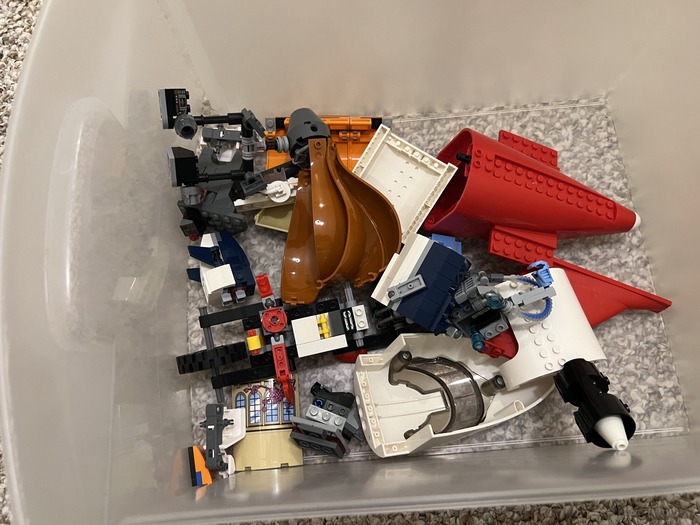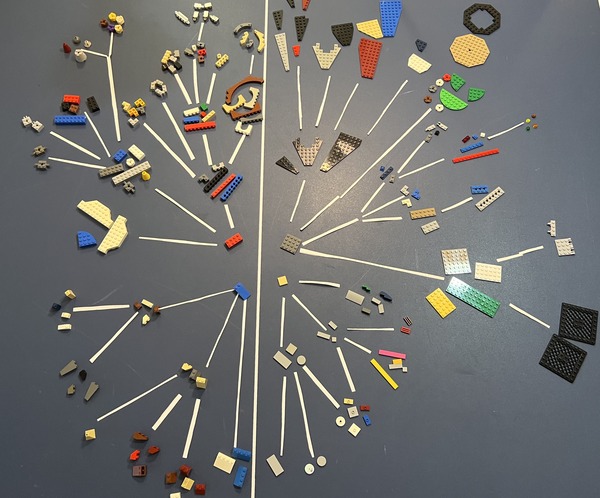How I Organized my Massive Lego Collection (Best Practices)
The current state of my Lego collection is pitiful to say the least. I’m in college as I write this article, and it’s been several years since I’ve even touched my old Legos. I’ve gotten re-interested in the hobby, and I want to rebuild my old sets. The only problem is that I received dozens of sets over the years, and I have a massive collection of Lego elements to sort through.
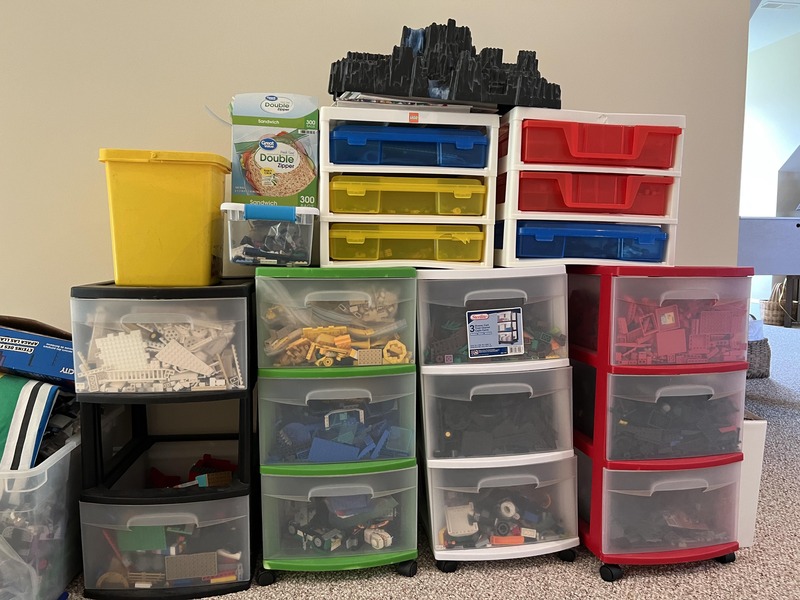
I’ve got to give myself a little credit. A lot of people’s Lego collections are a huge, single bin filled with different colored bricks. I’ve managed to sort my Lego by color and weed out most of the Mini-figures. I still feel no closer to rebuilding my sets. After trying to rebuild just one set, I realized that sorting Legos by color is not great.
Sorting by color is terrible for finding the pieces you need.
While sorting by color is the most popular Lego sorting method, it’s the worst for rebuilding Legos. In my experience, same-colored bricks stuffed in a bin are a mess to sort through. You need to dump the bin and pick through the mess to find the bricks you need. Do not sort your Legos by color!
How am I supposed to find a specific, tiny Lego element in a sea of different bricks and pieces that are the same color? It’s like finding a needle in a haystack! If you’re like me and you want to rebuild your old Lego sets, you’re going to spend more time searching for the right bricks than actually building the set.
You can trust me on this opinion because I sorted my Lego collection by color. I have thousands of Legos! I listened to the other Lego blogs that say sorting by color will make rebuilding your old sets so much easier, and they were wrong! See below how difficult it is to find a specific piece in a sea of Legos.

Try to find a single Lego brick in that mess, I dare you! I find that the smaller elements slip through the cracks to the bottom of the bin, making them impossible to find. On top of that, you can see a NERF bullet, gray and blue Legos, and other items in that bin that aren’t even Legos!
It’s clear that I need to step up my Lego organization game. So, let’s go through the science of organizing Legos as I walk you through my sorting process.
Table of Contents
- Lego Sorting Methods (Which one works for you?)
- Method 1: Sorting Legos by Color
- Method 2: Sorting by Element
- The Lego Element Family Tree
- Method 3: Sorting Legos by Color and Element
- Method 4: Sorting Legos by Element, Color and Piece
- Narrow down Lego elements into color and pieces.
- 5 Pro Tips for Sorting Legos
- Sort Legos on a table instead of the floor.
- Before sorting, remove any non-Lego elements.
- Set aside any half-built Lego sets and pieces with stickers.
- Keep brick separators handy.
- Keep an eye out for Legos stuck inside bricks.
Lego Sorting Methods (Which one works for you?)
Picking a sorting method comes down to how many Legos you have and how much time you want to invest. The more legos you have, the more complicated of a method you should choose.
This leads to more time spent organizing, and there’s a point where it doesn’t benefit you to sort your Legos any further. Keep in mind that once you’ve categorized your Legos to the point where you can easily pick out the pieces you need, you don’t need to sort them further.
Anything over 2,000 pieces doesn’t need to be sorted. The average Lego Star Wars set has 391 pieces (from my spreadsheet), which makes that about 5 sets. If you have anything more than that, you will need to pick one of three sorting styles (from least to most complicated)
- Sort by Color (Under 7,000 Legos).
- Sort by Element and Color (Under 10,000 Legos).
- Sort by Piece and Color (Over 10,000 Legos).
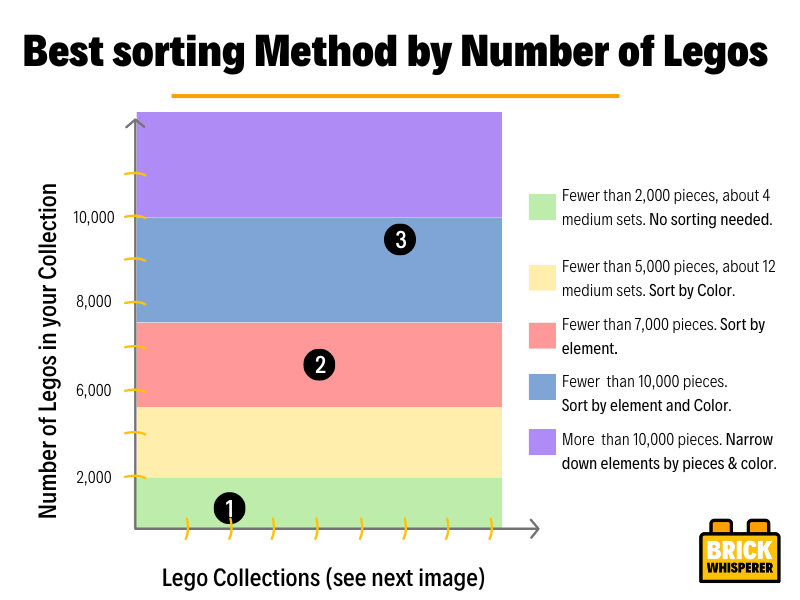

Image #2: “lego pile” (CC BY-SA 2.0) by justgrimes
Method 1: Sorting Legos by Color
Sorting by color is an acceptable method of organization for smaller Lego collections. It takes less time to organize Legos by color than by element, and significantly less than by piece. Once you reach the threshold of 2000 pieces, around 5 average-sized Lego sets, it will start to become difficult to find the pieces you need. That’s when you move on to Method 2, sorting by elements.
Start by dumping your Legos on a flat table. If you can easily walk around the table, this will help give you different viewpoints of the pile while sorting. Spread the Legos evenly and find a bin for each color in your pile.
Without picking them up, slide the Legos along the table into groups of the same color. Have a separate bin for any Minifigure and non-Lego elements you find while sorting. Once you have decent-sized piles of same colored Legos, hold the bin under the table and slide the Legos in.
Notice that I tell you not to pick up Legos. This is a technique I picked up from Brick Scavenger on Youtube. He spends hours organizing Legos and found that picking them up takes way more time than sliding them across the table. Use this technique for any of the sorting methods in this article.
Method 2: Sorting Legos by Element
After that 5,000 piece threshold, colored Lego bins start to become too full. Larger plates and bricks take up too much space, and smaller tiles and pieces fall through the cracks to the bottom. This makes for an inefficient mess of you digging through a bin to find the one Lego you need for your set. If this describes your situation, you need to sort your Legos by Element.
To properly explain this method, you need to be familiar with the different types of Lego Elements. A Lego Element is a categorization of Legos that is specific to a certain shape, function, and size. The most common are bricks, plates, slopes, tiles, SNOT, and technique pieces. The first four are very common in my collection, so I go over them in my Lego Family Tree.
The Lego Element Family Tree
The four Lego Elements I have on display are bricks (top left), plates (top right), slopes (bottom left), and tiles (bottom right). These are the most common in my lego collection, which is why I’m separating my colors into these categories. There are more Lego elements, such as SNOT and technic pieces, which can also be separated.
The goal of this family tree is to show you how many degrees Lego Elements can be separated by. There’s overlying elements (plates, tiles, etc.) that can be broken down into subgroups, and those subgroups can be separated even further. It depends on how many Legos are in your collections and how much time you want to spend organizing.
If you find that after separating your plates from the rest of your collection you have many of different shapes and sizes, it’s a good idea to separate them further.
When I organize by Element I start off with their base element. I pour my Legos out on a table and select an element. I weed out every Lego of that type, then further narrow them down based on their width, triangular shape, curved shape, technic capabilities, and joints.
Let’s start off with Plates. I will find all of the Legos in this family tree, regardless of their color. If I find I have too many elements, which I do, I’ll go to Method 3 and separate them by color. After separating all the plates from the rest of my Legos, I use the categories from my family tree to separate the triangles, curved bricks, 1 wide plates, 2 wide plates, and others.
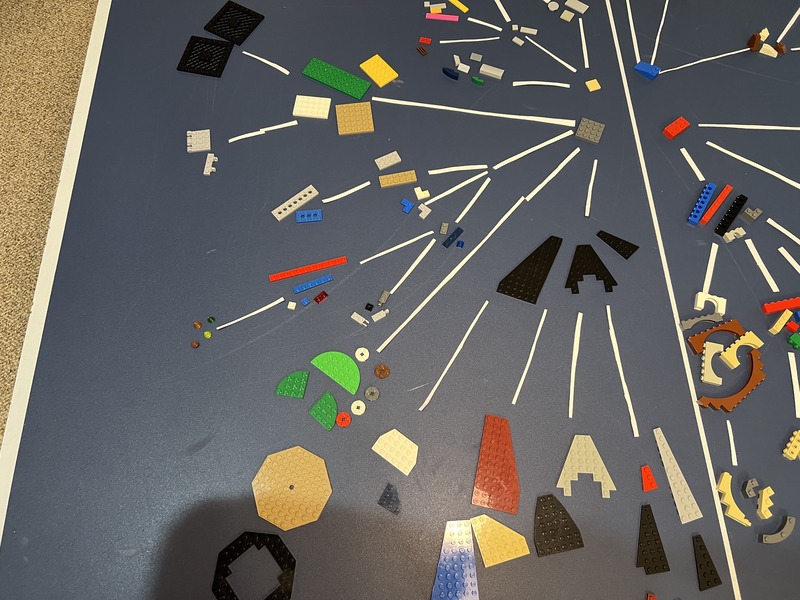
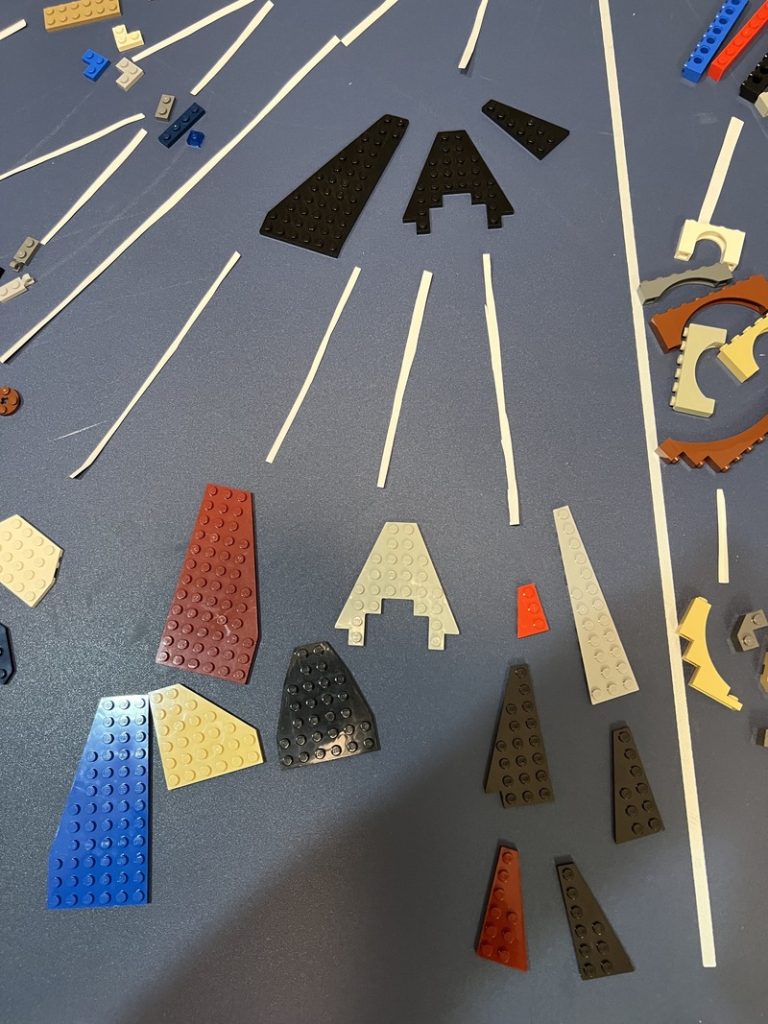
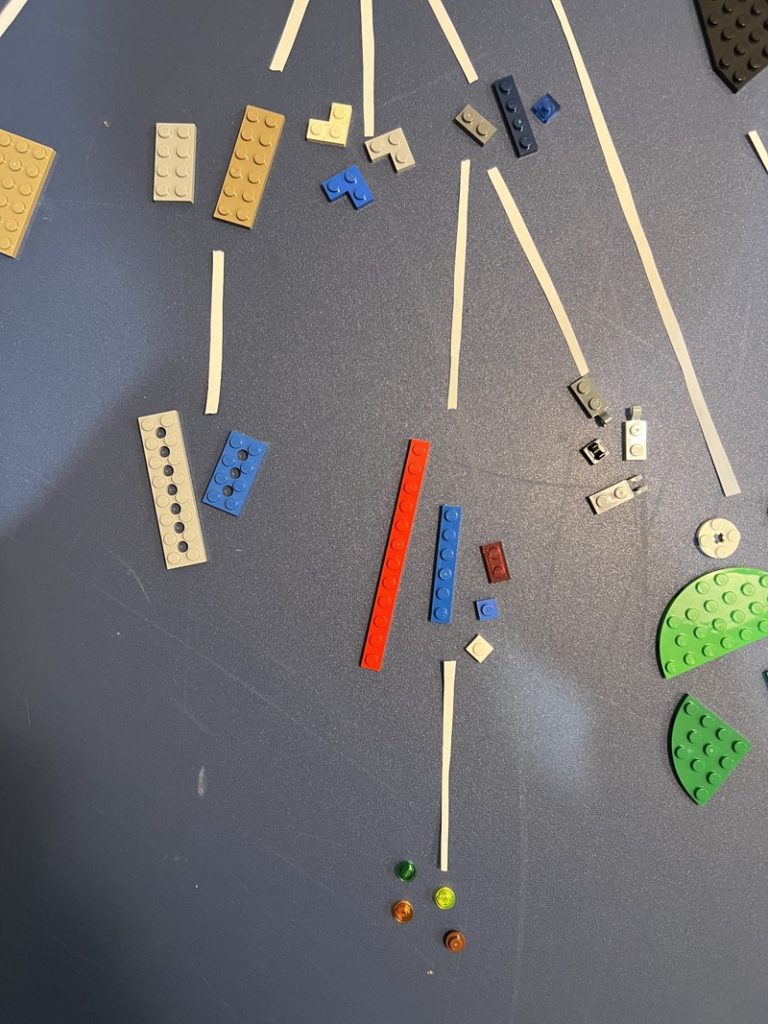
I have an article dedicated to my Lego Family Tree: The Family Tree of Lego Pieces (With Pictures). Once you graduate from sorting Legos by color, this is the article for you. It’s the building blocks of organizing Legos by their element.
Method 3: Sorting Legos by Element and Color.
My lego collection is around the 10,000 Lego mark, just from an estimation. So, I’m going into the sorting Legos by Element and Color method. Fortunately, my Legos are already separated by color. This will make organizing them not so time consuming.
Start by dumping your Legos on a flat table. If you can easily walk around the table, this will help give you different viewpoints of the pile while sorting. This is important when weeding our specific elements.
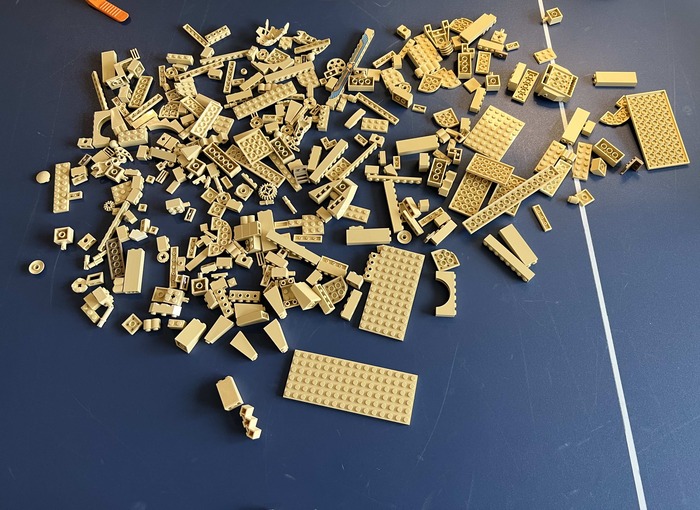
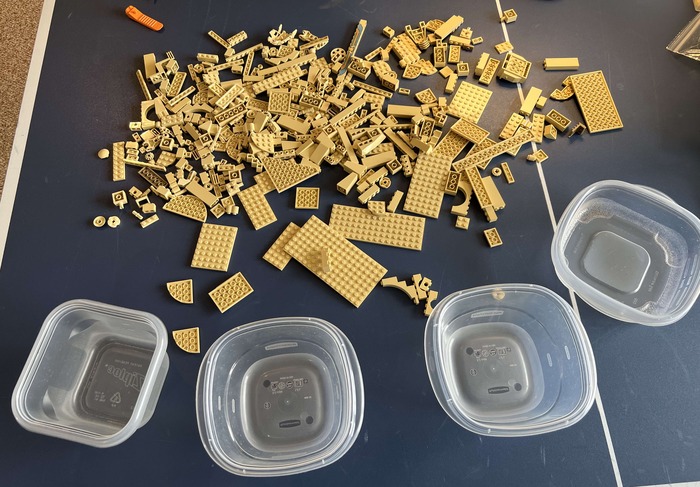
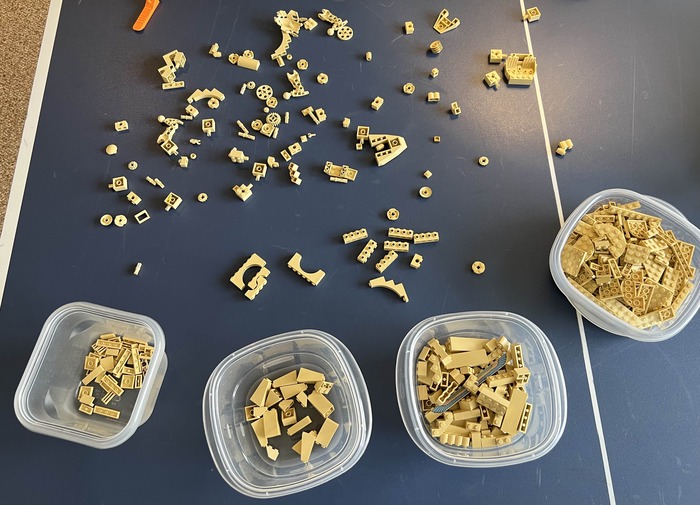
I like to have different bins each Lego Element. Using the Brick Scavenger method, slide the Legos into small piles grouped by their element. Start by the most common element in your pile just by looking at it. For me, this was plates. Slide each pile off the table in their respective bins.
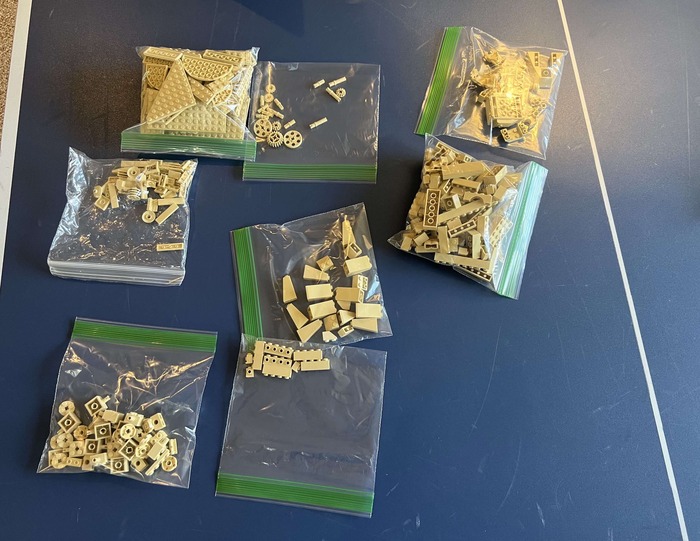
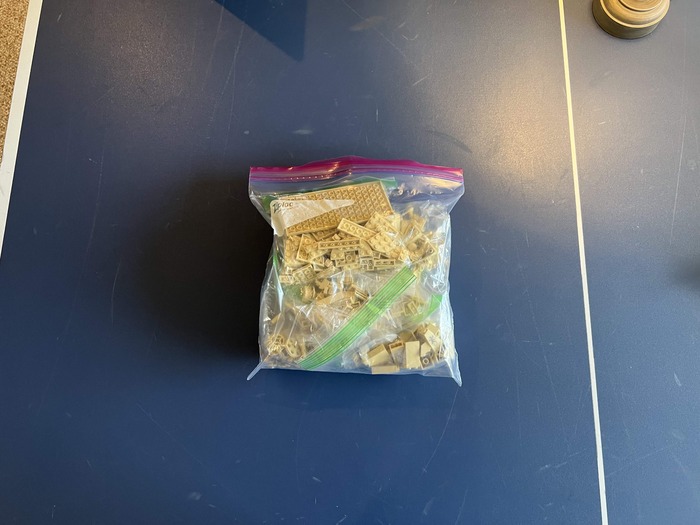
My tan Legos were a small group of my overall collection, which made this organizing take about 30 minutes. I bagged each element and put them in a larger Ziplock bag. This is a cheaper alternative to organizer drawers, but requires that you dump each bag when looking for the Lego you need. For this reason, it’s a temporary solution until I invest in some Lego organizers.
Method 4: Sorting Legos by Element, Color, and Piece.
Sorting Legos by element, color, and piece requires tens of hours of organization. I only recommend it for serious collectors with collections over 10,000 pieces. 10,000 Legos is only 25 sets if they’re an average 391 pieces (Source), which isn’t a lot. The reason why I have the benchmark so low is that you can apply certain variations of organizing by piece and element in your overall Lego collection. Let me explain.
Being realistic, you’re going to have more of one type of element in your Lego collection than others. I find so many 1-wide plates in my collections of the same color that it is starting to make sense for me to separate them by piece. This means different containers for 1×1 plates, 1×2, and so on.
This is pushing me from Method 3 to Method 4, but it’s still more a hybrid of the two. I am not separating all my elements by piece, but only the ones where I have so many of one element that it makes sense to. I recommend you do the same when it makes sense. A clear sign is that it’s taking too long to find the one piece you need when digging through your bins.
To anyone with humungous Lego collections looking to go this route, I recommend that you start by sorting Legos by color, then element, then by their element sub groups. Go through my article and try each numbered method until your Lego groupings are in manageable amounts. It’s a huge time commitment to break down each element into specific pieces, and big financial investment for containers and shelf space.
5 Pro Tips for Sorting Legos
I’m writing this article about halfway through my sorting process, and I wanted to share a few tips I’ve learned the hard way.
Sort Legos on a table instead of the floor.
Dump your Legos, or a portion of your Legos if you have a larger collection, on a table and not the ground. I tried sorting my Legos on the ground and my back was aching!
I quickly learned my lesson that Lego sorting needs to be done on a table. Bonus points if you can walk around that table to look at your Legos at different angles. That way, you can find more Lego elements from the pile. I’m using half of my ping-pong table that separates in two.
Before sorting, remove any non-Lego elements.
This may not apply to everyone, but it did for my collection. Over the years, various non-Lego things ended up in my bins. Make a point of removing these before sorting into elements because they tend to get in the way. Here are a few of the toys I found in my Lego bin.
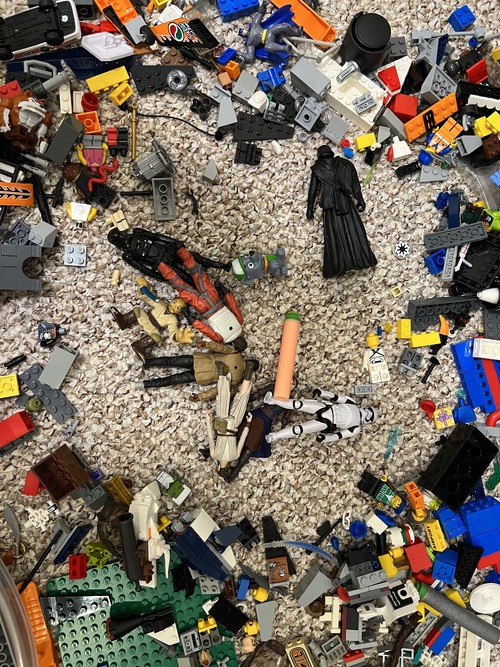
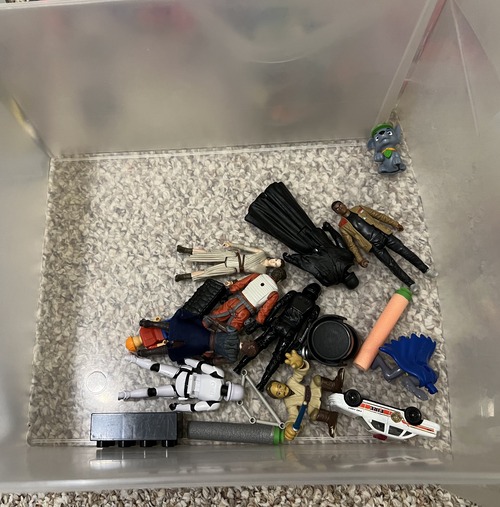
Keep brick separators handy.
As I sort through my Legos I continue to find connected bricks that are a pain to remove with just my fingers. In order to not damage my Legos, I’ve gotten in the habit of using brick separators. Once you learn how to use them properly, you’ll see the value in them as well.
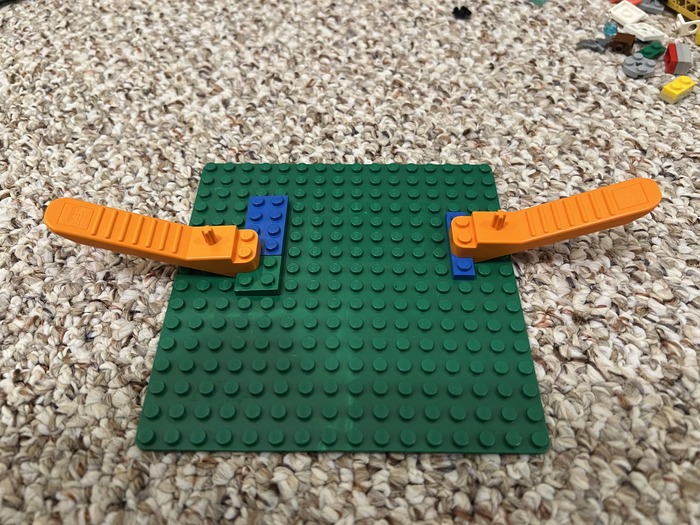
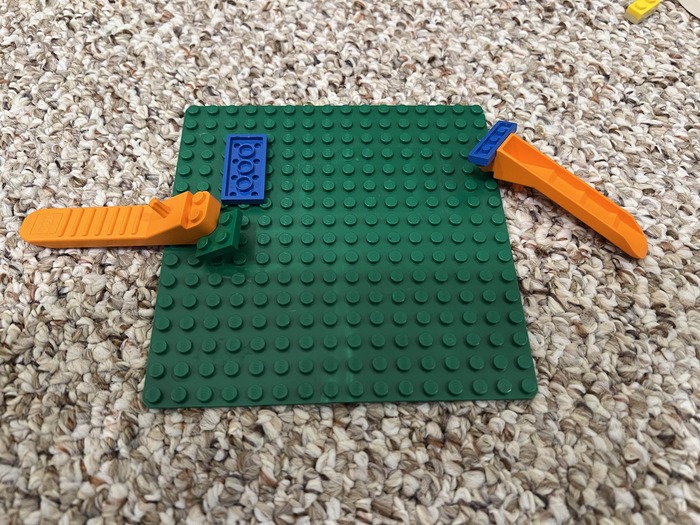
Keep an eye out for Legos stuck inside bricks.
It’s surprisingly common for smaller Lego elements to get stuck inside bricks. As you sort through your Legos, keep an eye out for plates and tiles stuck inside Lego bricks. Use a thin rod piece to pry it out from inside the Lego. You’ll thank yourself down the road when you need that tiny Lego for the set you’re putting together.
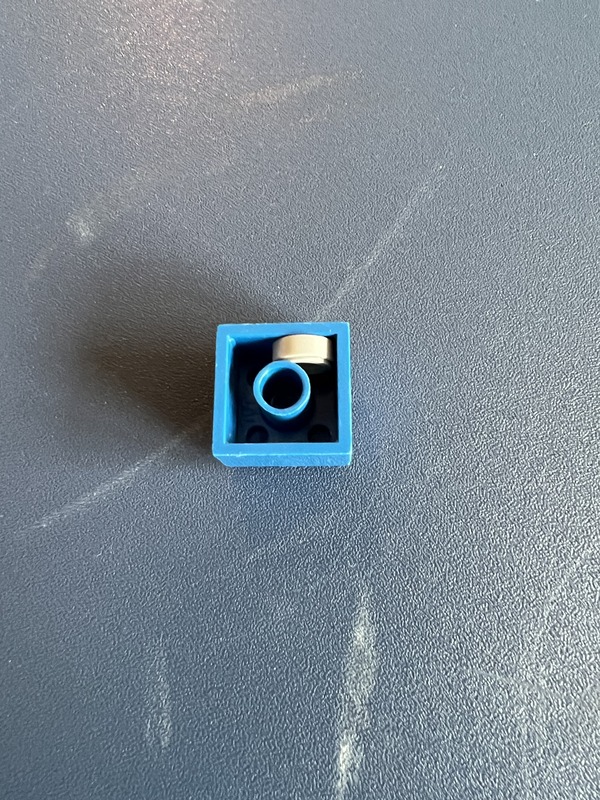
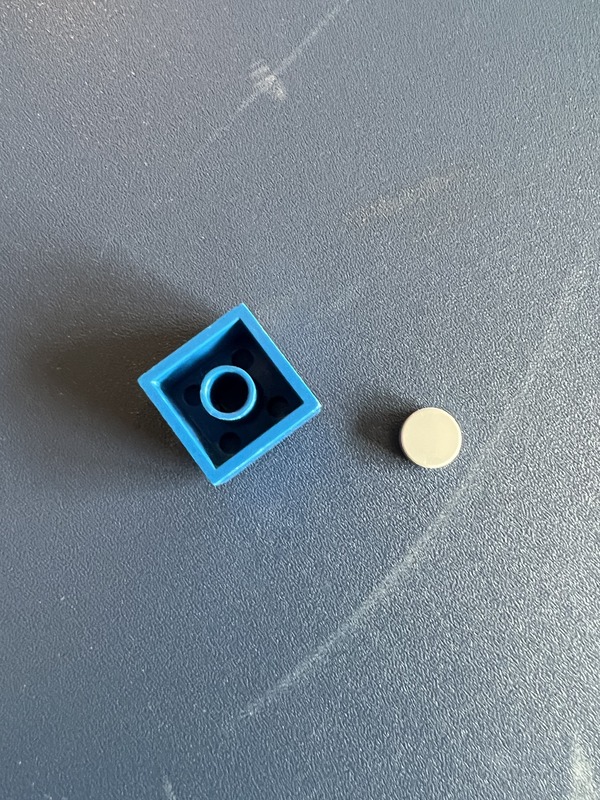
Set aside any half-built Lego sets and pieces with stickers.
Don’t approach anything without the end goal in mind. Here, I want to rebuild my old Lego sets. As I sort my legos, I keep finding half-built sets and tiles with stickers. I’m setting these aside for when I rebuild my sets. I don’t want to use Legos that weren’t originally apart of the set when I rebuild them. Keep a special bin for these Legos that you can later separate by set, like I am:
